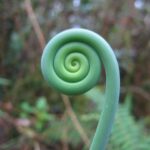Sexuality seems to be a simple binary characteristic of human and animal physiology. But modern science has begun to unravel some extraordinary complexities in the way male and female physiology and behavior develops, and reveals a wide variety in how individuals experience their sexuality. Many of our cultural ideas about sexuality need to change.

Two Competing Views: Sex is Binary or Sex is Culture
Many of us have struggled to reconcile two contradictory modern views of human sexuality. The first is that sex is binary. This is a long-held religious conviction for many, which science validated with a key genetic discovery more than a century ago: Sex is determined biologically by one of our 23 chromosomes: An XX pattern means you are female and an XY pairing means you are male, and all sexual behaviors and identity flow from those differences.
The second modern view of sex is that sexuality is a continuum. This is a more recent conviction, linked with social liberalization in the 20thcentury and the appeal for greater gender equity. In this view, sexual behaviors and social roles are largely imposed by culture, and that culture fails to accommodate naturally occurring variations in sexual expression and identity.
Not only are these contrary positions often firmly held, but the topic of sex is highly charged, both culturally and emotionally, and it has recently sparked considerable political controversy over policies for school bathrooms. As I have read papers and polemics on the topic over the years, I have been reminded of the Harry Belafonte song “Man Piaba”. The chorus describes the explanations received in response to his questions about sex:
It was clear as mud, but it covered the ground,
and the con-fu-sion made the brew go around.
Research on The Complexities of Sex
New science may help resolve this confusion. A recent article in Nautilus by Dr. Sidddhartha Mukherjee, Why Sex Is Mostly Binary but Gender Is a Spectrum, summarizes what is now known of the science of sexuality. The article reviews ancient speculations about sex and describes the 1903 discovery (by Nettie Stevens) of the XY chromosomal pairing. Then, in 1950, researchers named the rare “Swyer Syndrome”, cases where individuals have XY chromosomes but clearly female physiology and behavior. Subsequent research determined these individuals had a mutation in the “SRY” master sex gene and thus, while having the XY chromosome, male developmental processes were never triggered.
This provides a relatively simple explanation of one variant, but the entire process by which sexual development progresses is anything but simple. There are variants in human chromosomal pairing, including single X, triple X, XXY, XYY, and others, and a wide range of variants under the SRY genetic regulatory process. Many variations can and do occur in humans, yielding a wide range in gender identification. Sex, in this sense, is more like a continuum, contrary to the “sex is binary” orthodoxy. Mukherjee reports:
“SRY must act on dozens of targets—turning them on and off, activating some genes and repressing others, like a relay race that moves a baton from hand to hand. These genes, in turn, integrate inputs from the self and the environment—from hormones, behaviors, exposures, social performance, cultural role-playing, and memory… What we call gender, then, is an elaborate genetic and developmental cascade, with SRY at the tip of the hierarchy, and modifiers, integrators, instigators, and interpreters below.”
Sexual Identity is Serious and Personal
There is a common idea (under the “sex is culture” view) that sexual identity is plastic and can be refashioned. Mukherjee reviews several cases where anatomical choices had to be made at birth, and XY individuals were given female physiology and raised as girls. These examples were medical marvels but tragic psychological failures, as were many cases of so-called “conversion therapy.” She observes:
“To reprogram gender using purely behavioral therapy and cultural reinforcement begins to tip into the realm of impossibility… The growing consensus in medicine is that, aside from exceedingly rare exceptions, children should be assigned to their chromosomal sex regardless of anatomical variations and differences.”
However, she also notes that it is now feasible to change an initial decision later — if the individual, as they mature developmentally, discovers their sexual identity is different from the one they were assigned.
The outcomes at the end of the lengthy and extraordinarily complex sexual development cascade are not uniform or binary. Individuals experience this process and their sexuality in a wide variety of ways. Significantly, the development of gender identity reflects a complex interplay between physiological, psychological and social developments that cannot be forced.
Changing Culture to Match the Science
So, is sex binary, or a continuum? The answer is — both. Sexuality is usually genetically binary, but variations occur naturally at the genetic, epigenetic and functional levels. Given individuals will experience sexual development and sexual identity in a wide variety of ways. This is the way human biology works, not a question of choice, weakness, “acting out”, or sin. While there are genetic and functional norms that largely reflect binary characteristics, the naturally occurring variations are diverse and plentiful in a population of 7.5 Billion. These naturally occurring variations should be accepted and welcomed within the human community.
At the same time, we cannot deny or reject the binary nature of sexuality in a genetic and developmental context. It is fundamental to our evolutionary history. Sexual reproduction began on earth more than a billion years ago and confers significant evolutionary benefits. And, whether we like it or not, this binary feature is deeply embedded in our demographics and in our behavioral and cultural gender norms, including the institution of marriage.
That does not mean that all of our cultural norms are positive. Some cultural attitudes arise from fear of those who are different. Cultural attitudes can also serve to reinforce dominance or privilege among selected groups. As a general rule, cultural ideas and practices that convey approval or disapproval or reinforce inequality on the basis of natural genetic or physiological variations, including sex and race, are discriminatory and unfair. Such ideas and behaviors should be identified and discouraged. Whether you consider this issue from a scientific or religious perspective, men and women, as well as those who experience sexual identify at variance with those norms, are deserving of equal dignity and respect.
However, the acceptance of a range of sexual identities also does not mean that all sexual behaviors should be culturally permissible. Behaviors that demonstrate mutual respect, open and honest communication, self-control and sincere loving-kindness manifest positive virtues. Behaviors that are non-consensual, predatory, coercive or manipulative by definition are harmful and should be condemned, along with acts of deceit or betrayal of promises (adultery). Beyond these, there is a wide range of cultural issues, including the question of school bathroom assignment, where simple rules may be difficult to apply.
Conclusion
We are faced with an enormous challenge — to work toward cultural attitudes and practices that respect both the norms and the variations in human sexuality while reinforcing virtuous behaviors. We have a long way to go.

















